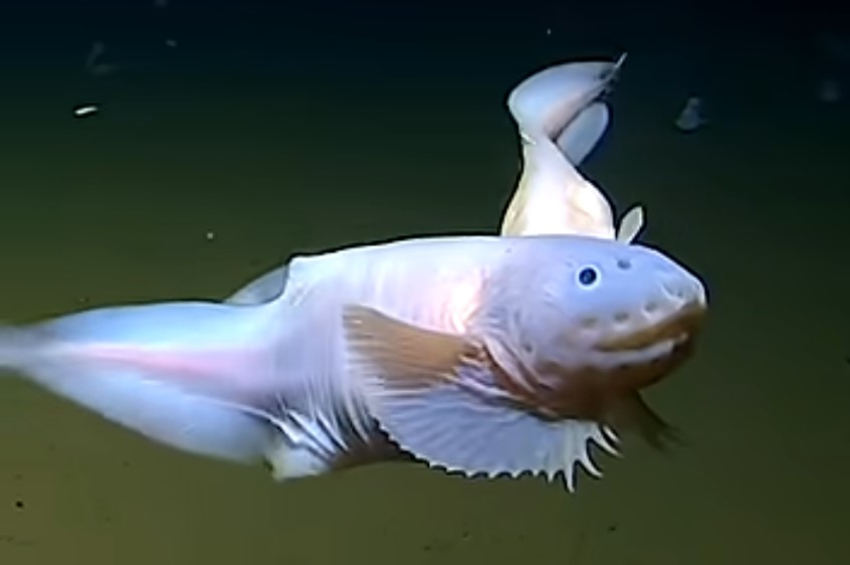[video] Guess who’s hiding more than 8 kilometers below the ocean’s surface?
Scientists from the University of Western Australia (UWA) and Japan have filmed the world’s deepest fish more than 8.3 kilometers below the ocean surface — a groundbreaking discovery that expands our understanding of how life survives under immense pressure.
During an expedition aboard the research ship DSSV Pressure Drop, researchers deployed baited cameras into the deep trenches around Japan as part of a decade-long study on the world’s deepest fish populations.
More to read:
Researchers discover a walking fish in underwater mountains
The mission explored the Japan, Izu-Ogasawara, and Ryukyu trenches — reaching depths of up to 9,300 meters.
In the Izu-Ogasawara Trench, south of Japan, the team recorded an unknown species of snailfish belonging to the Pseudoliparis genus at a depth of 8,336 meters (27,350 feet) — the deepest fish ever filmed. A few days later, in the nearby Japan Trench, they also captured two specimens of Pseudoliparis belyaevi from 8,022 meters, the first fish ever collected from beyond the 8,000-meter mark.
“We have spent over 15 years researching these deep snailfish; there is so much more to them than simply the depth, but the maximum depth they can survive is truly astonishing,” Professor Alan Jamieson, founder of the Minderoo-UWA Deep Sea Research Centre and chief scientist of the expedition, was quoted as saying in a press release.
The Izu-Ogasawara Trench, one of the planet’s least explored marine environments, plunges to nearly 11,000 meters. Its relatively warm, nutrient-rich waters appear to support a thriving ecosystem compared to other deep-sea trenches such as the Mariana. This means temperatures play an important role in life support.
Snailfish, typically small — measuring around 20 to 25 centimeters — feed on tiny crustaceans that survive by scavenging organic debris drifting from the ocean surface. Interestingly, the record-breaking fish was a juvenile, reflecting a pattern opposite to most deep-sea species, as young snailfish tend to inhabit greater depths than adults.
More to read:
Researchers discover jellyfish species that can fuse into one organism
The expedition was supported by Caladan Oceanic, a private company focused on under sea technology and supporting deep ocean expeditions, and Inkfish, a marine research oriented organization.
The findings mark a milestone in deep-sea biology and suggest that more record-breaking species may still be hiding in the abyssal depths of the Pacific.





![[video] Putin rules from shadows: Investigation finds Russian leader rarely works in Moscow](/news_img/2025/11/11/news1_mediu.jpg)

